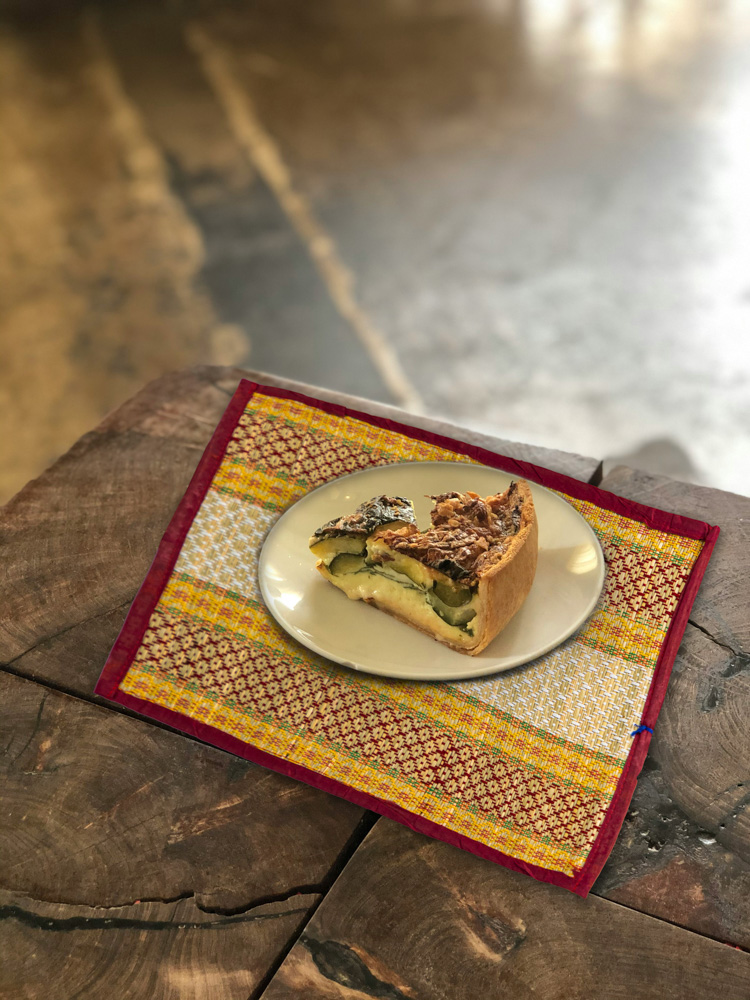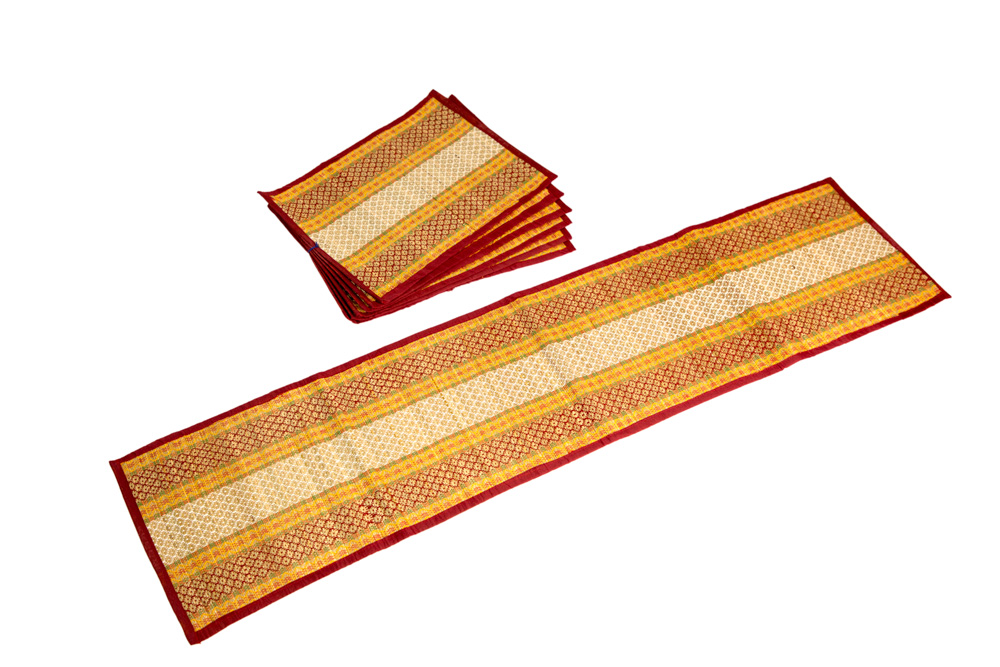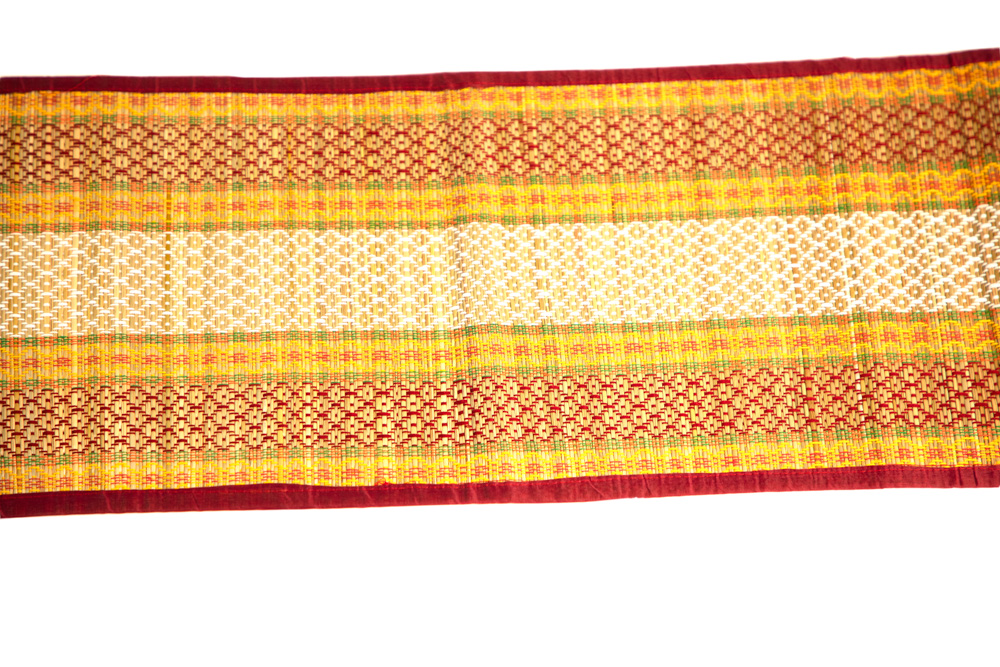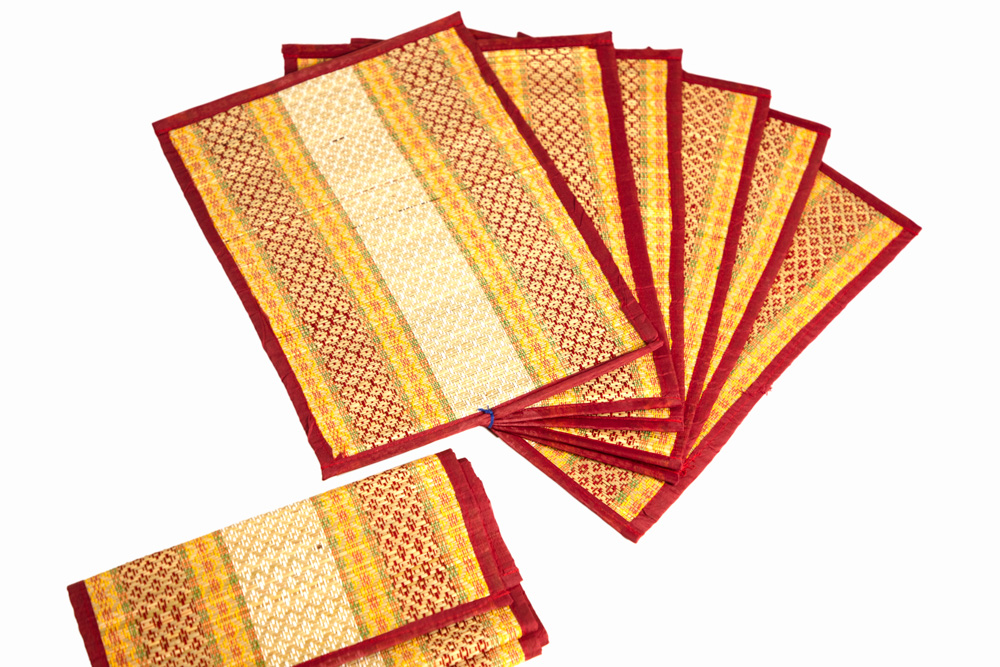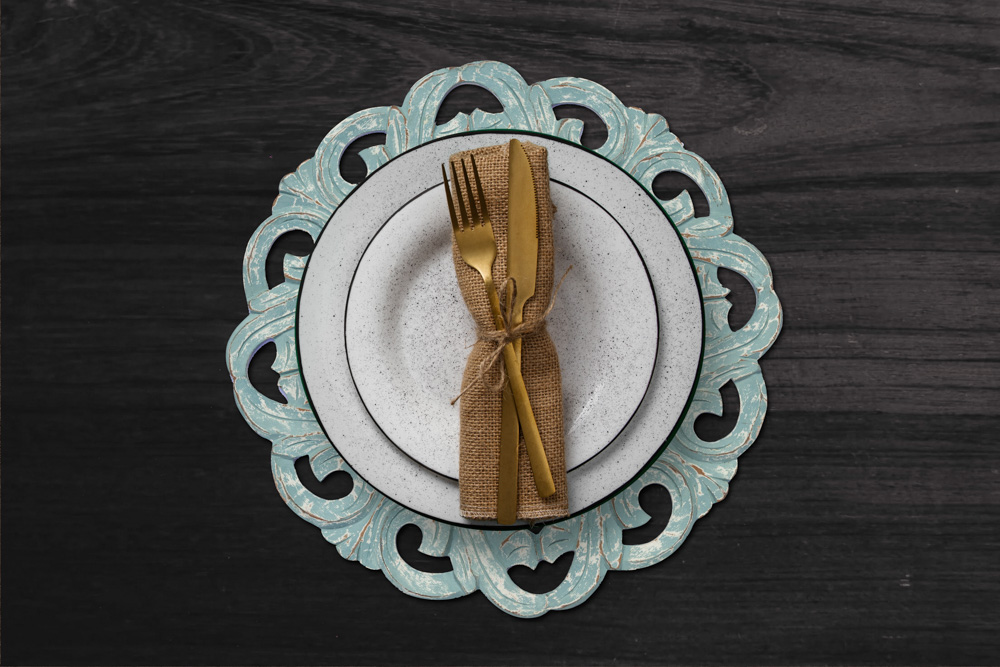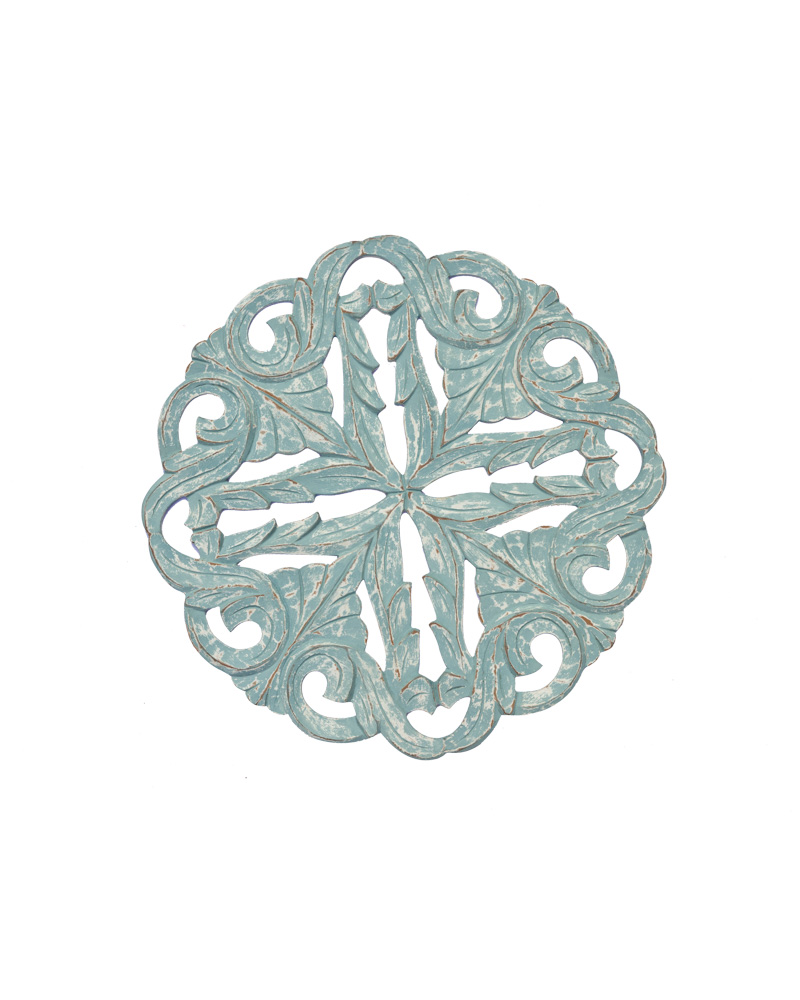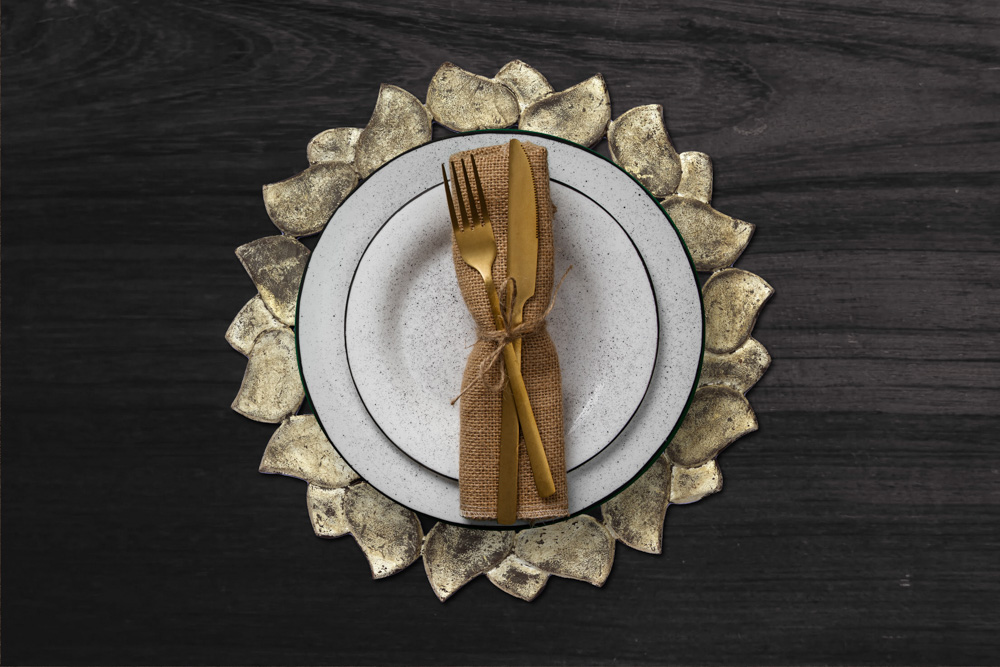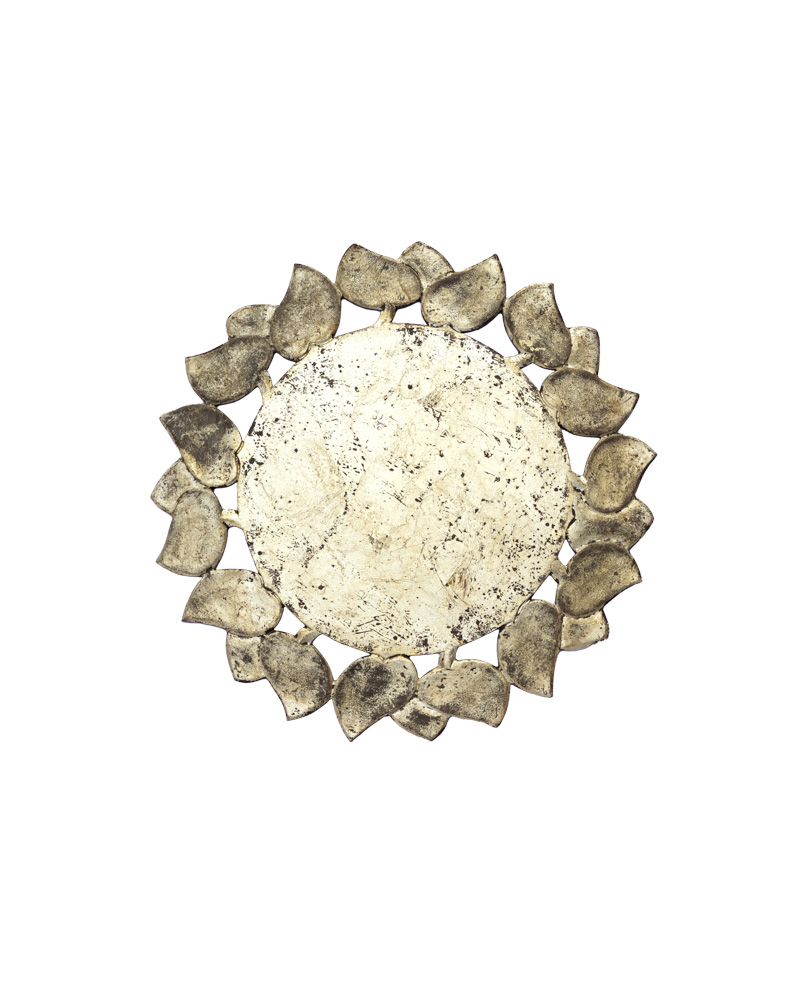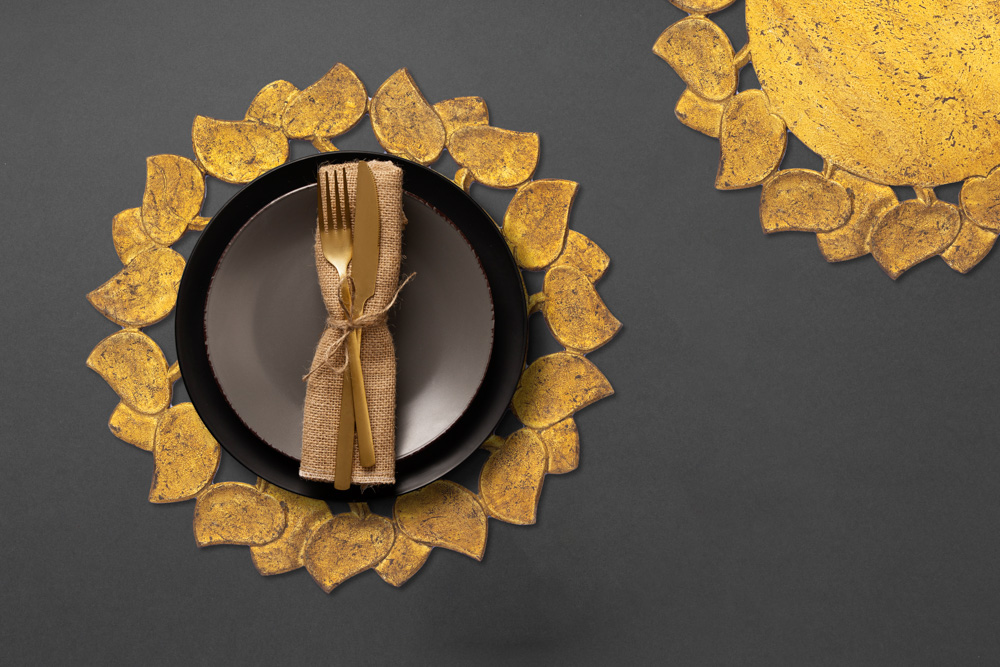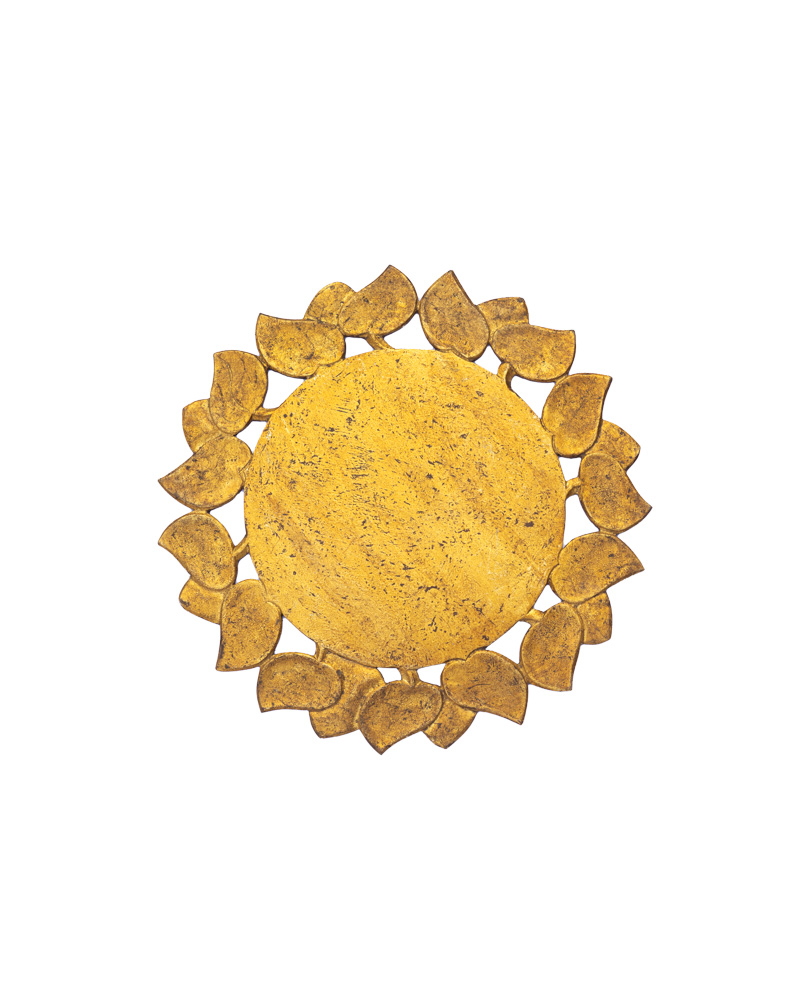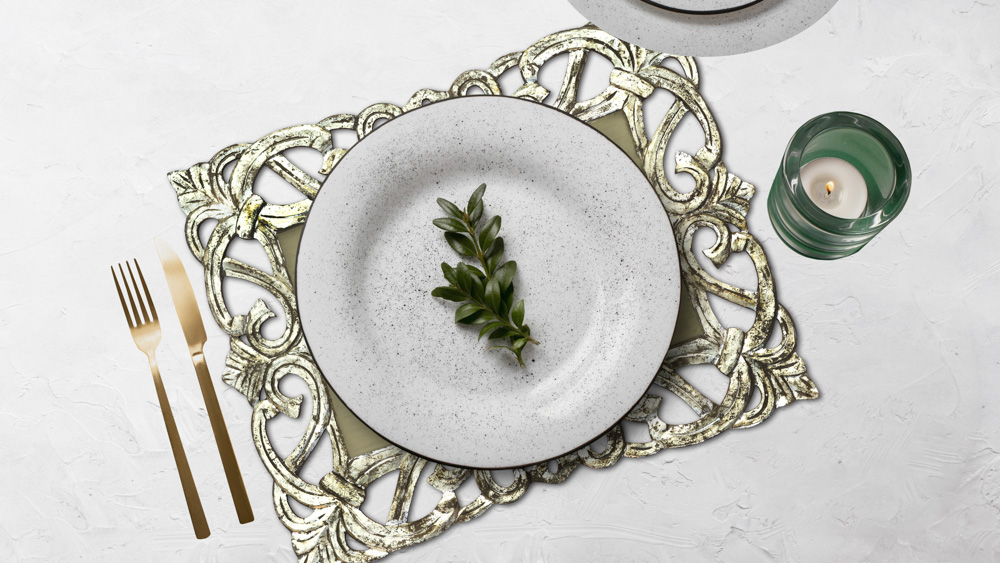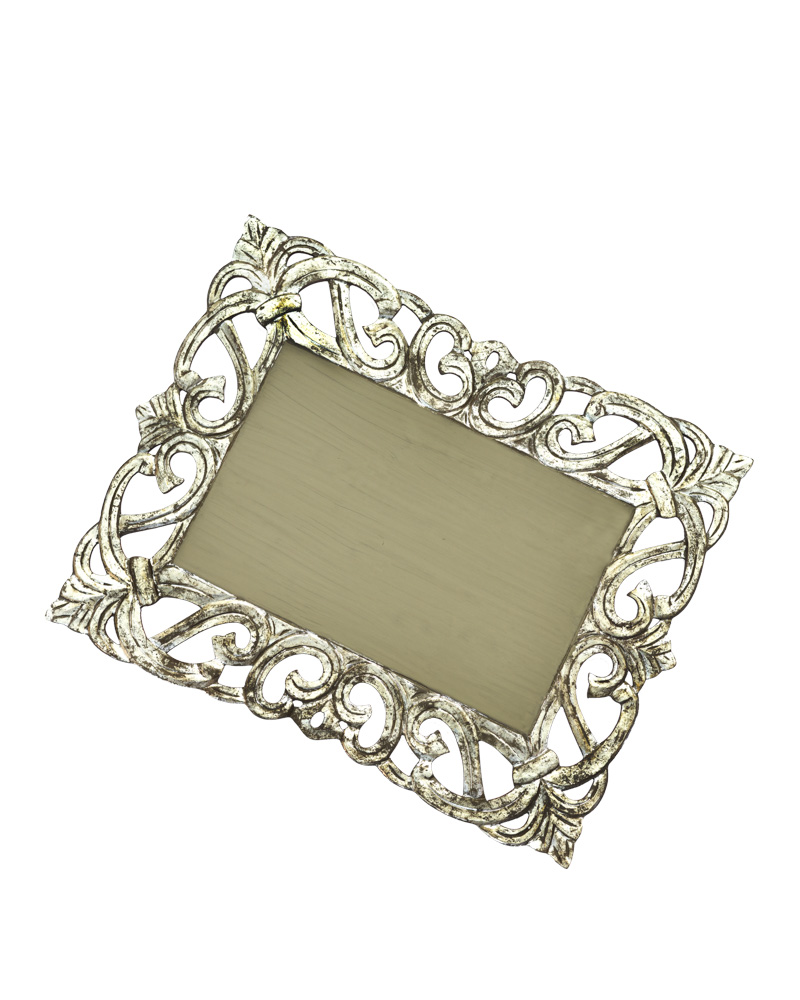| About the Craft |
HISTORY OF MADHUR KATHI
Madurkathi Mats originate from native Bengal and Bangladesh. These are made from a unique weaving technique using a local grass called madurkathi. It is indigenous to the region. Madurkathi mats depict Bengal’s rich cultural heritage and symbolize craftsmanship, creativity, and Bengal’s traditional values.
The art of making madurkathi mats has been passed down through generations, and it has become an integral part of the region. Practiced for centuries by rural artisans, especially women, it is believed that the craft of weaving Madurkathi Mats was introduced during the Mughal reign in India, around the 16th century. Since then, each generation has added unique creativities, ideas, and innovations to the art of making madurkathi mats.
One of the key aspects of Madurkathi Mats is the skill and creativity of the weavers. The sewers are mostly women and have the knowledge, creativity, patience, and all the above-mentioned qualities required to innovate in the making of madurkathi mats. Weaving Madurkathi Mats is not just a source of bread and butter for these talented artisans but a way to preserve their cultural heritage and keep their skills alive. Madurkathi Mats play a vital role in the rural economy of Bengal. Apart from rural importance, Madurkathi Mats also have social and environmental significance. The use of natural colors and dyes in the designs makes these eco-friendly and sustainable. These mats are biodegradable and environment-friendly, making them sustainable options for floor coverings as well. Madurkathi Mats also have a social impact. These provide employment opportunities to rural artisans, especially women. The craft of weaving these eco-friendly mats has empowered many pastoral women by providing them with ways to generate income, enhance their socio-economic status, and raise their living standards.
HOW IT IS CRAFTED
The word ‘madur’ means mat and ‘kathi’ refers to grass used in weaving. This grass is a type of reed called Cyperus corymbose. It is locally known as madurkathi or madkathi. It grows copiously in the marshy and swampy lands of Bengal, especially in the districts of Nadia, Hooghly, and Murshidabad.
The process of weaving Madurkathi Mats involves several complex steps. It begins with the collection of madurkathi grass. This grass is harvested during the monsoon season when it is young and flexible. The harvested grass is then cleaned, sorted, and soaked in water for several days to make it soft and malleable.
Once the grass is ready, the knitter starts the weaving process by first creating the base of the mat using a wooden frame called ‘khunti’. The grass is then tightly woven in a warp-and-weft pattern, forming a geometric design. The weavers use a special technique called ‘ jalda’ to create serpentine patterns and logos on the mat.
The weavers use a range of colors of grass to create patterns, which is the main feature of the making of Madurkathi Mats. The stitcher dyes the grass using natural colors obtained from vegetables, fruits, and other local resources. The dyed grass is then woven into a mat, creating vibrant and colorful designs.
The motifs on Madurkathi Mats are usually inspired by nature, such as flowers, leaves, birds, animals, and even geometric patterns and abstract arrangements.
After the weaving is complete, the mat is carefully taken off the frame and trimmed to give it a neat finish. The edges are folded and sewn to prevent unraveling. Some are even adorned with decorative elements like beads, shells, and tassels to enhance their beauty and aesthetic appeal. All these make Madurkathi Mats extra vibrant and super appealing to the eyes of the buyers. |

